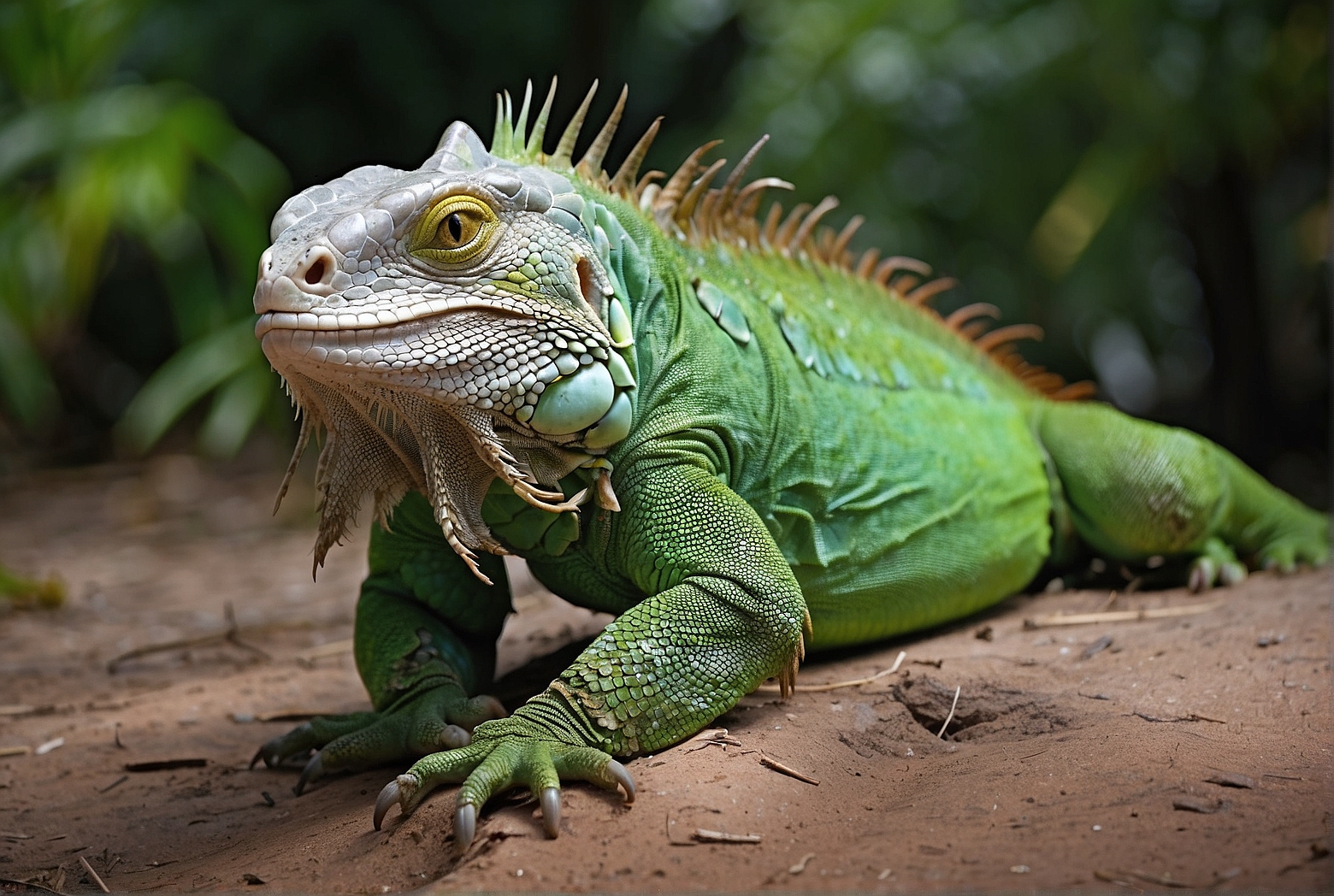Did you know that there is a common misconception about the green iguanas? Many people wonder if these fascinating creatures are poisonous. Well, let’s put that question to rest once and for all. In this article, we will explore the truth behind the alleged toxicity of green iguanas and uncover some interesting facts about these fascinating reptiles. So, grab a cup of tea and join us on this journey to discover the truth about green iguanas and their potentially venomous reputation.
Physical characteristics
Green iguanas are known for their impressive size and unique physical characteristics. As one of the largest iguanas in the world, they can reach lengths of up to 6 feet, making them truly majestic creatures. Their bodies are covered in rough, scaly skin that provides protection from the elements and predators. The scales have a bumpy texture, which aids in camouflage and helps them blend into their environment. Green iguanas have a distinctive green coloration, which is most vibrant in males during mating season. Despite their name, their color can vary from shades of green to gray, brown, or even blue.
Diet
Green iguanas primarily follow a plant-based diet, making them herbivores. They have a unique digestive system that enables them to break down tough plant matter efficiently. Their diet consists of a variety of fruits and vegetables, such as leafy greens, fruits, flowers, and even cacti. They also have a special adaptation that allows them to absorb water from plants, making them well-suited for their natural habitat. While they are primarily herbivorous, they may occasionally consume small amounts of insects or other small animals, particularly when they are young and require additional protein for growth.
Natural habitat
Green iguanas are native to the tropical rainforests of Central and South America, where they thrive in the warm and humid climate. They are well-adapted to semi-aquatic environments and are often found near bodies of water, such as rivers, lakes, or swamps. These habitats provide them with access to a reliable water source, as well as an abundance of vegetation for feeding. In their natural habitat, green iguanas are also known for their tree-dwelling behavior. They spend much of their time basking in the sun on branches, which helps regulate their body temperature and provides them with a vantage point to spot potential predators or prey.
Defensive mechanisms
When it comes to defending themselves, green iguanas have a few effective strategies up their sleeves. Their powerful jaws and sharp teeth allow them to deliver a painful bite if they feel threatened. In addition to biting, they can also use their strong tails to whip at potential predators, providing them with a means of self-defense. Their coloration and skin texture also play a crucial role in their defense mechanism. By blending into their surroundings through camouflage, they can remain inconspicuous and avoid drawing attention to themselves. If a green iguana does happen to lose its tail during an altercation, it is capable of regrowing a new one, although it may not reach the same length or coloration as the original.
Toxicity concerns
While green iguanas are not inherently venomous, some concerns have been raised regarding their potential toxicity due to the presence of bacteria in their mouths. Like many reptiles, green iguanas naturally harbor bacteria in their oral cavity, which can cause infections if introduced into an open wound or through consumption of contaminated food. However, these bacteria are not typically harmful to humans unless proper hygiene and precautions are not followed. It is essential to handle green iguanas with clean hands and to maintain good hygiene practices to minimize any potential risks.

Common misconceptions
One common misconception about green iguanas is that they are often confused with other species of iguanas. While the name “green iguana” specifically refers to the species Iguana iguana, there are other similar-looking iguanas with different species names. These misconceptions can lead to misunderstandings about their behavior, care requirements, and potential risks. It is crucial to gather accurate information about the specific species of iguana to properly care for and understand their unique characteristics.
Interaction with humans
Green iguanas have gained popularity in the pet trade due to their striking appearance and docile nature. However, their large size and specific care requirements make them challenging pets to care for properly. Due to their need for a spacious enclosure, specific heating and lighting requirements, and a specialized diet, owning a green iguana requires a significant commitment of time, effort, and resources. It is important to research and understand their care needs thoroughly before considering them as pets. Additionally, conservation efforts play a vital role in protecting the wild populations of green iguanas.
Research and scientific studies
Scientific research on green iguanas has been carried out to better understand their unique characteristics, behavior, and ecological impact. Toxicity testing has been conducted specifically to assess any potential health risks associated with their oral bacteria. These studies aim to determine effective ways to minimize the transmission of bacteria and educate the public on proper handling techniques. Behavioral studies have provided insights into their social structure and mating behaviors, while research on ecological impact helps evaluate their role in the ecosystem and the potential consequences of their declining populations.
Conclusion
Understanding the true nature of green iguanas is essential for their proper care and handling. While they may not be venomous, it is crucial to be aware of the potential risks associated with their oral bacteria. By following proper hygiene practices and maintaining a clean environment, these risks can be minimized. Green iguanas are fascinating creatures with unique physical characteristics, dietary needs, and natural habitats. Their conservation is of utmost importance to ensure the continued existence of these incredible reptiles in their native environments. By appreciating and respecting their natural behaviors and providing them with the care they require, we can contribute to their well-being and conservation efforts.
